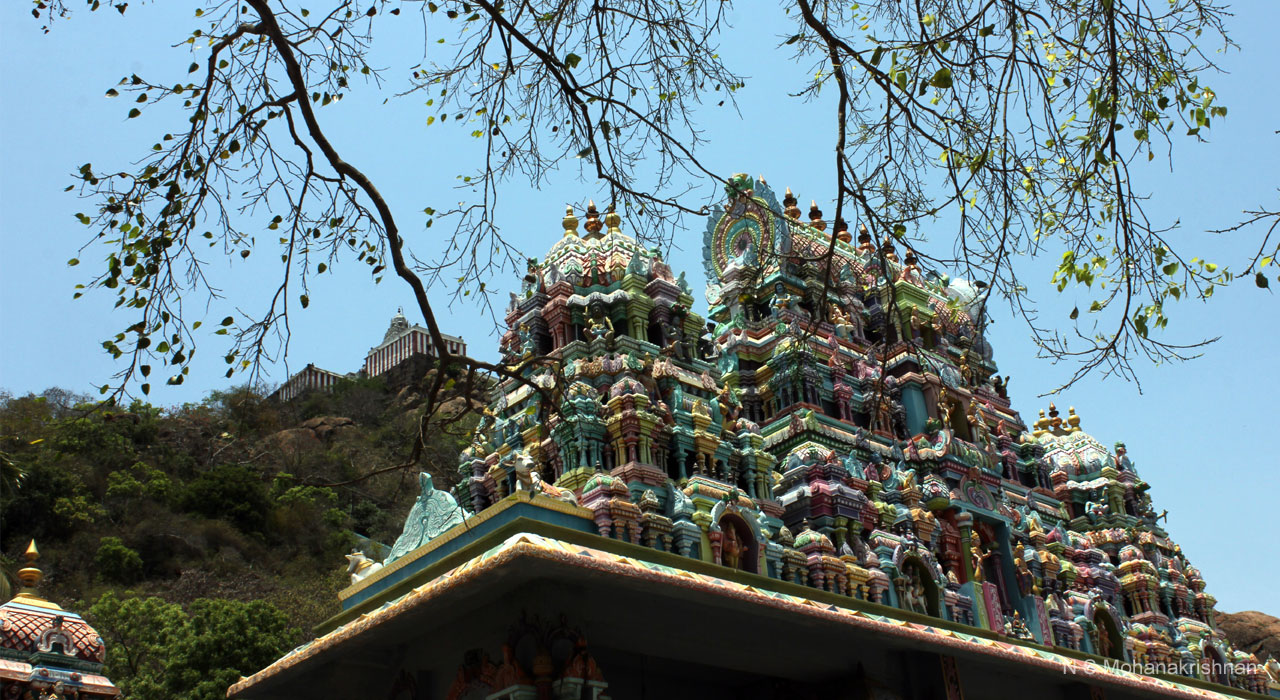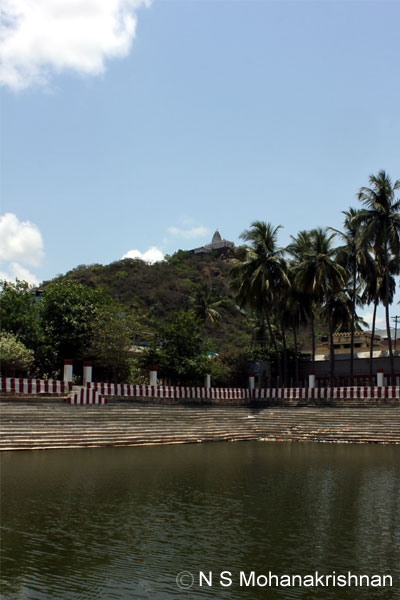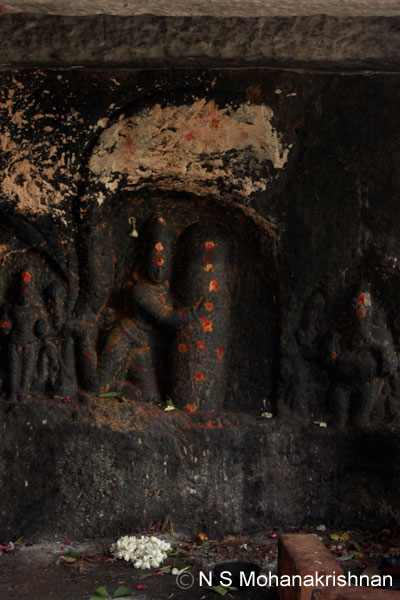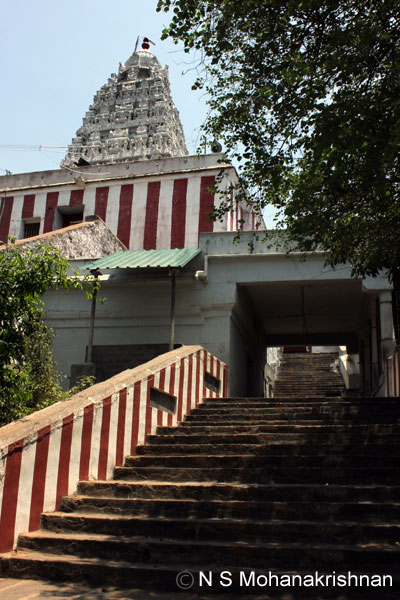Vedagireeswarar, facing east
Thirukazhukundram
Thirukazhukundram
Paadal Petra Sthalam, Thirukazhukundram Taluk

God
Goddess
Thirupurasundari, facing east at the base temple
Other Deities
to be updated



History
Legend
Directions
Vedagireeswarar Thirukazhukundram is in the northern side of the town and is visible from miles around. There is ample paid parking below from where you start your climb up. It is advisable to climb up early before it gets hot and wait up for the vultures as the 562 steps can be tough. The temple closes at 12.30 PM and opens again in the evening at 4 pm, plan your trip accordingly.
Stay and Food
None locally except tea and snack shops. A small restaurant is available just below the climb to Vedagireeswarar Thirukazhukundram.
